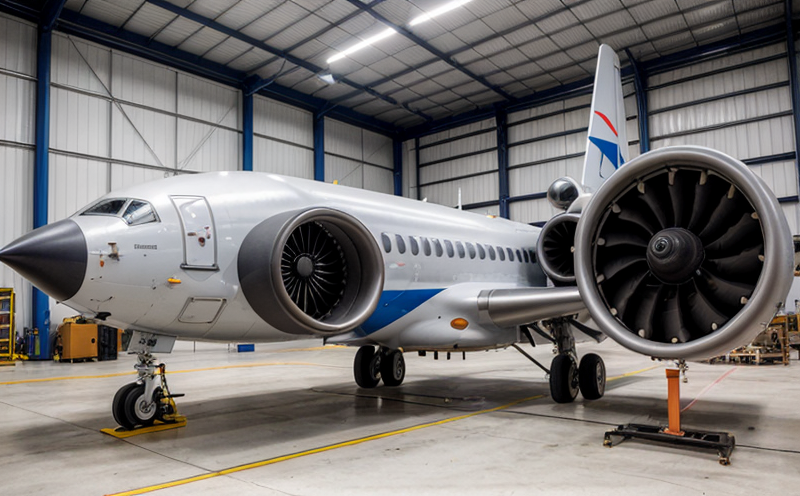Space Telescope Vibration and Acoustic Isolation Testing
The development of space telescopes is a sophisticated endeavor that requires rigorous testing to ensure optimal performance in their operating environments. The space environment poses unique challenges, including the absence of atmospheric drag, but also extreme temperature variations, cosmic radiation, and vibration from launch vehicles.
A critical aspect of space telescope development involves isolating the instrument from mechanical vibrations during launch and acoustic disturbances generated by rocket engines. These vibrations can significantly impact the stability and resolution of observations, leading to compromised data quality. Therefore, ensuring effective vibration and acoustic isolation is paramount for the successful deployment and operation of space telescopes.
The first step in achieving this involves understanding the specific requirements set forth by international standards such as ISO 18431, which provides guidelines for the design, analysis, and testing of structures subjected to vibration. For acoustic testing, the ASTM E907-12 standard is often referenced.
The process begins with a detailed analysis of the structural dynamics of the telescope. This includes finite element analysis (FEA) simulations to predict potential resonant frequencies and modes. From these analyses, it becomes clear which areas require enhanced vibration isolation measures. Common isolation methods involve the use of resilient materials like rubber pads or air springs between the telescope mount and its supporting structure.
For acoustic testing, a anechoic chamber is typically used to simulate the space environment free from external noise sources. This setup allows for precise measurement of how different frequencies propagate through the system under controlled conditions. A key parameter here is the reverberation time which must be carefully managed to ensure accurate measurements.
The testing process itself involves placing the telescope on a shaking table capable of replicating various launch scenarios, including multiple axes of motion and varying frequencies. Instruments like accelerometers are attached to critical components to monitor their response during simulated launches. Similarly, sound pressure levels (SPL) are measured using microphones placed around the chamber.
After completing these tests, detailed reports are generated outlining both vibration and acoustic performance data. These reports serve as crucial documentation for subsequent stages of development, including final design modifications and certification processes.
| Vibration Parameter | Description |
|---|---|
| Maximum Acceleration | The peak acceleration experienced by the telescope during launch simulation. |
| Resonant Frequencies | Frequencies at which the telescope exhibits minimal damping and maximum oscillation. |
| Vibration Modes | Distinct shapes representing how different parts of the telescope vibrate independently or collectively. |
The results from these tests play a vital role in refining the design, improving reliability, and enhancing overall performance. By adhering to stringent testing protocols based on recognized standards, manufacturers can confidently ensure that their space telescopes meet all necessary criteria before being launched into orbit.
In conclusion, vibration and acoustic isolation testing is an essential part of modern space telescope development. It ensures that these complex instruments perform flawlessly once deployed in the harsh conditions of space. Through careful planning, execution, and analysis, this testing process helps to mitigate risks associated with operational failures due to environmental factors.
Industry Applications
- Aerospace Engineering: Ensuring spacecraft components can withstand extreme conditions during launch.
- Space Exploration: Developing equipment that functions reliably in the vacuum of space.
- R&D: Optimizing designs for better performance and reduced risk.
| Test Case | Description |
|---|---|
| Launch Vibration Simulation | A series of tests to replicate the mechanical shocks experienced during a launch. |
| Acoustic Pressure Measurement | Measuring sound pressure levels to assess potential interference with sensitive instruments. |
| Resonance Frequency Analysis | Determining the natural frequencies of components to avoid resonance phenomena. |
The applications for vibration and acoustic testing extend beyond just space telescopes into other areas within aerospace and defense. For instance, it helps in designing aircraft that can maintain stability during takeoff and landing phases which are characterized by high levels of vibration and noise. Similarly, it plays a crucial role in military equipment where reliable operation under harsh conditions is critical.
By leveraging advanced testing techniques, engineers gain valuable insights into how their designs will behave in real-world scenarios. This knowledge translates directly into safer products that perform more effectively over extended periods.
Eurolab Advantages
State-of-the-Art Facilities: Our laboratories are equipped with the latest equipment to conduct precise and accurate tests. From high-power shaking tables to sophisticated acoustic measurement systems, we have everything needed to meet your testing needs.
Expertise in Standards Compliance: Eurolab’s team of professionals is well-versed in international standards like ISO 18431 and ASTM E907-12. We ensure that all tests are conducted according to these guidelines, providing you with reliable results that meet regulatory requirements.
Dedicated Project Management: Each project receives personalized attention from our dedicated team of experts. From initial consultation through final report generation, we take care of every step along the way to deliver successful outcomes.
Comprehensive Reporting: Our reports are detailed and comprehensive, providing clear interpretations and recommendations based on test findings. This helps you make informed decisions about further development or modifications needed.
Environmental and Sustainability Contributions
The work done in vibration and acoustic isolation testing contributes positively to both environmental protection and sustainability efforts. By ensuring that space telescopes can operate effectively without compromising performance, we help preserve our planet's resources for future generations.
In addition, by minimizing the risk of equipment failure during launch or once deployed in orbit, we reduce the need for frequent replacements which in turn lowers waste production. Furthermore, accurate testing ensures that designs are optimized right from the start reducing material usage and energy consumption throughout manufacturing processes.
Our commitment to sustainability is reflected not only in our testing methods but also through our operational practices which adhere to stringent environmental regulations worldwide.





